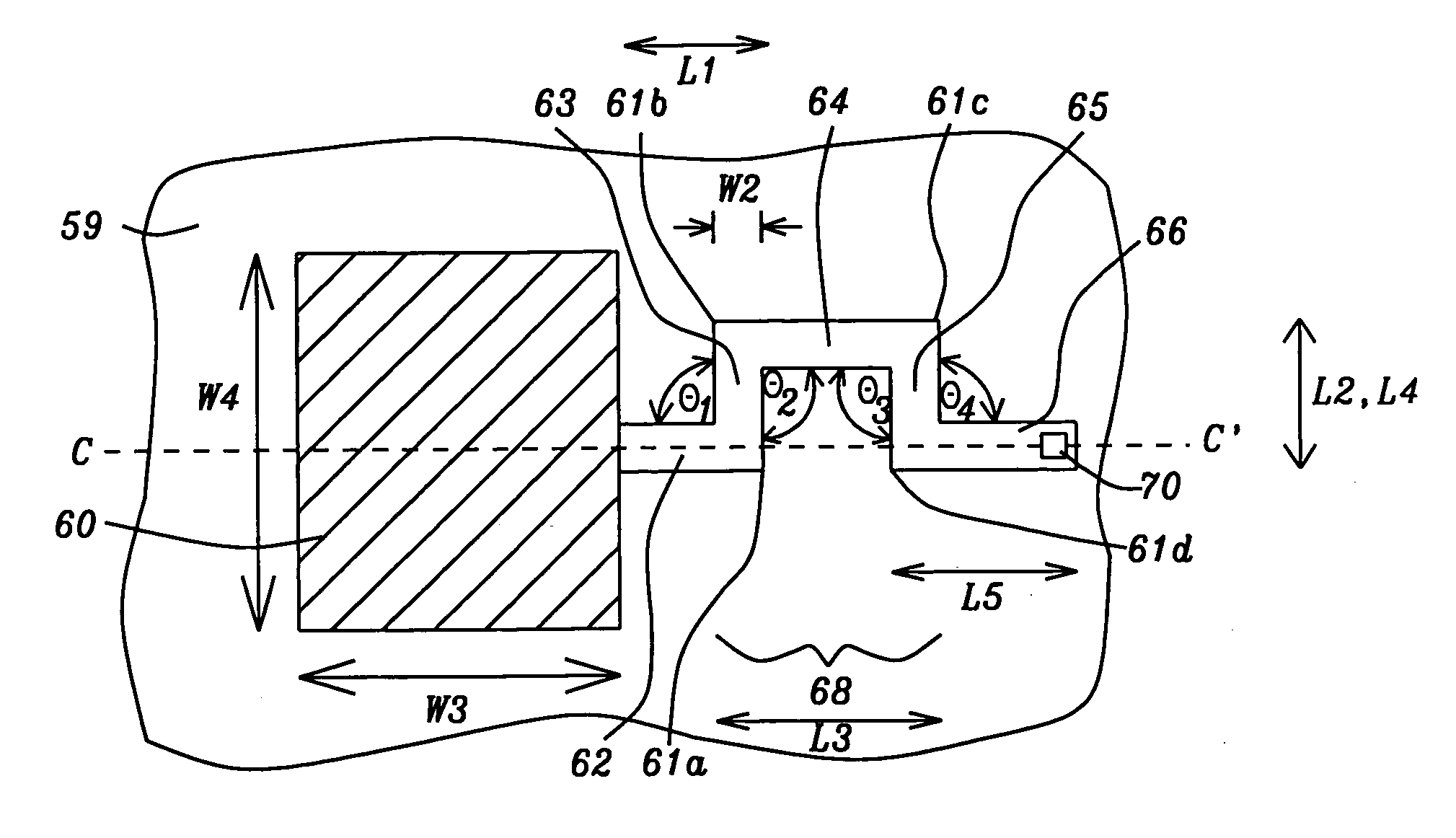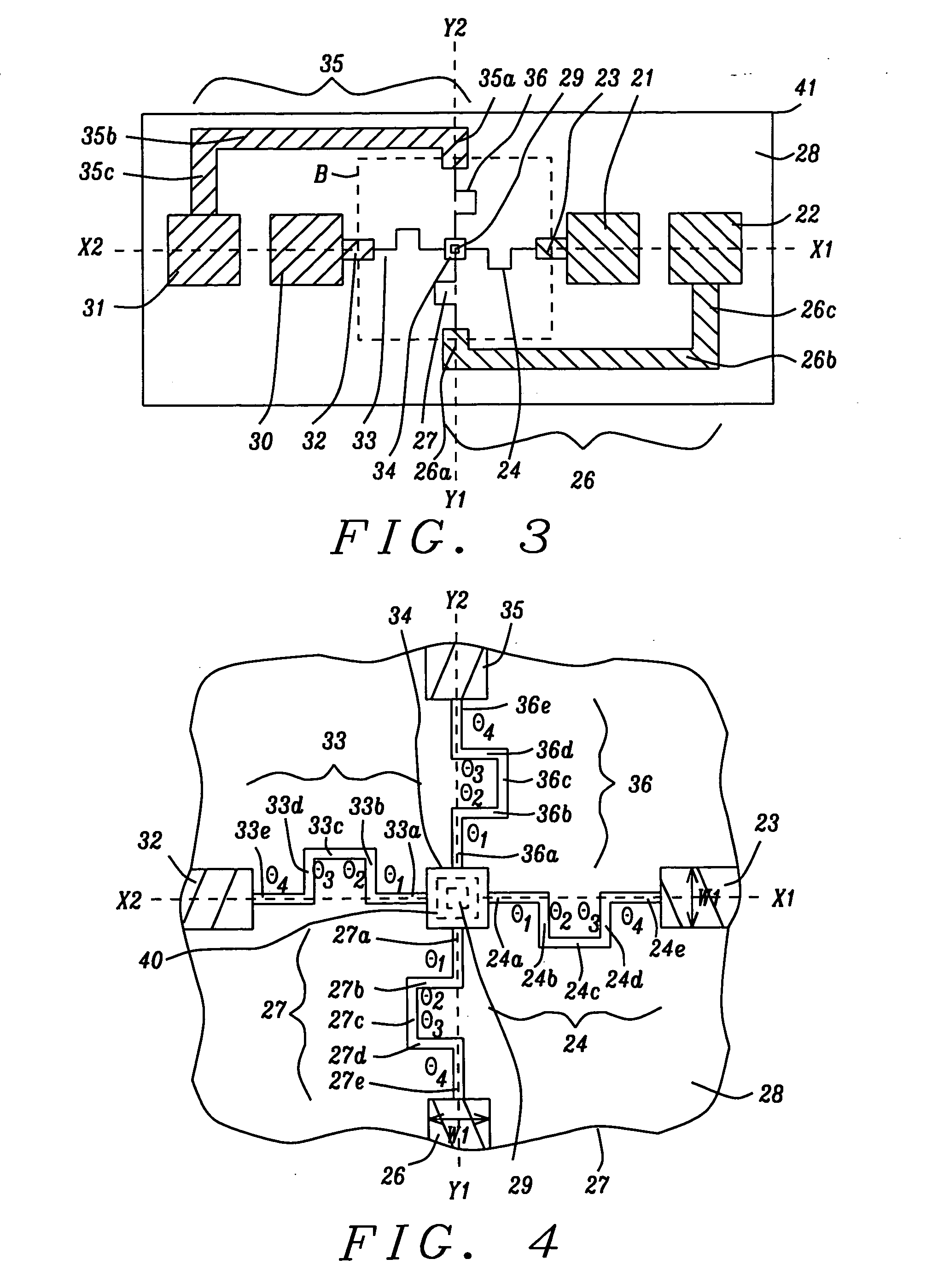Wiring structure to minimize stress induced void formation
a technology of wiring structure and stress induced void, which is applied in the direction of semiconductor/solid-state device testing/measurement, radio frequency controlled devices, instruments, etc., can solve the problems of device failure, stress induced voiding is a common problem, and the device fails
- Summary
- Abstract
- Description
- Claims
- Application Information
AI Technical Summary
Benefits of technology
Problems solved by technology
Method used
Image
Examples
first embodiment
[0048] In the first embodiment depicted in FIGS. 3-7, a via test structure formed on a semiconductor substrate is used to measure via resistance and is particularly useful for providing a more accurate determination of the lifetime of a via during a reliability stress test. The present invention also provides for a method that employs the novel via test structure to determine via resistance during a reliability stress test.
[0049] Referring to FIG. 3, a top-down view of the via test structure of a preferred embodiment of the present invention is shown. Via test structure 41 is fabricated on a semiconductor substrate (not shown) which is typically silicon but may also be based on other semiconductor materials used in the art. The via test structure 41 is formed in layer 28 that may be either a homogenous layer or may include one or more etch stop layers, one or more low k dielectric layers, and one or more cap or passivation layers. Individual dielectric layers within the dielectric l...
second embodiment
[0071] In a second embodiment depicted in FIGS. 11-12, a wiring structure is formed on a substrate and is comprised of a first conducting layer having a large area portion with a first thickness, a first width, a first length, and a plurality of sides and a protrusion having a first thickness, second width, and second length with two ends and at least one bending portion. One end of the protrusion is connected to one side of the large area portion while the other end is connected to the bottom of a via that adjoins an overlying second conducting layer.
[0072] Referring to FIG. 11, a method of forming the first conducting layer in the interconnect structure of the present invention is described. A substrate 57 is shown upon which an etch stop layer 58 and a dielectric layer 59 have been sequentially deposited by a chemical vapor deposition (CVD) method, plasma enhanced CVD (PECVD) method, or the like. The substrate 57 is typically comprised of silicon and may include active and passiv...
third embodiment
[0077] Referring to FIG. 12, a third embodiment is depicted in which the protrusion that connects a large area portion with a via in a first conducting layer is comprised of five segments and one bending portion that has three segments. The first conducting layer is comprised of the large area portion 60 having a first width w3, a first length w4, and a first thickness and a protrusion that has five overlapping segments each having a width w2, a length, two ends, and a first thickness. The first segment 62, second segment 63, and third segment 64 are formed substantially as described above. One end of a fourth segment 65 with a length MA overlaps the end of the third segment 64 that does not overlap the second segment 63 to form a bend 61c with an angle θ3 of about 45° to 135°. There is a fifth segment 66 with an end that overlaps the other end of the fourth segment 65 to form a bend 61d with an angle θ4 of about 45° to 135°. The fifth segment 66 that has a length L5 is preferably f...
PUM
 Login to View More
Login to View More Abstract
Description
Claims
Application Information
 Login to View More
Login to View More - R&D
- Intellectual Property
- Life Sciences
- Materials
- Tech Scout
- Unparalleled Data Quality
- Higher Quality Content
- 60% Fewer Hallucinations
Browse by: Latest US Patents, China's latest patents, Technical Efficacy Thesaurus, Application Domain, Technology Topic, Popular Technical Reports.
© 2025 PatSnap. All rights reserved.Legal|Privacy policy|Modern Slavery Act Transparency Statement|Sitemap|About US| Contact US: help@patsnap.com



